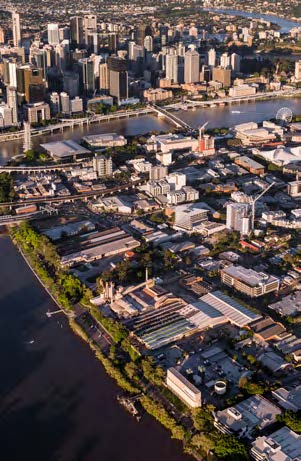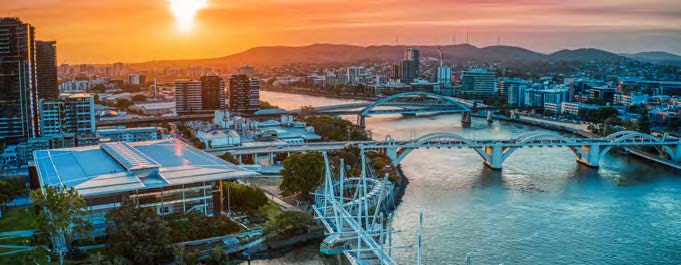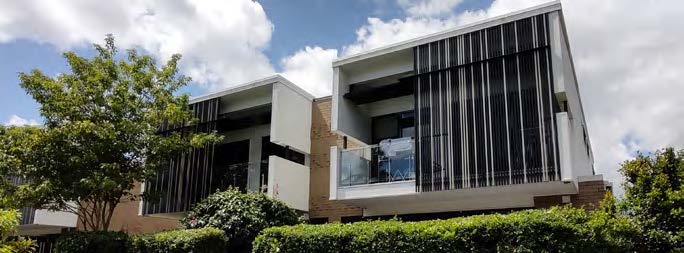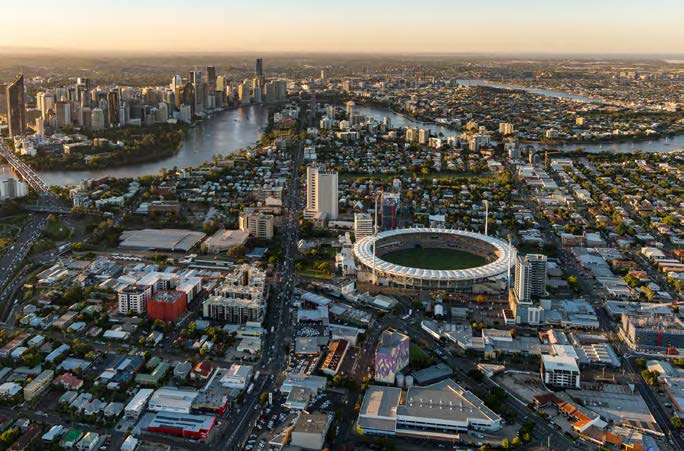Brisbane’s Boom: Tackling Housing Challenges
Watch the video here
The Fastest Growing Capital City in Australia
Brisbane is experiencing remarkable growth, with its attractive lifestyle, green credentials, and strong economy drawing people from all over. As a result, it has become Australia’s fastest-growing capital city. The population of Brisbane has now surpassed 1.26 million people, and the city attracts approximately 275 new residents every week. In 2021, Brisbane welcomed 35,000 new residents from interstate and overseas. Queensland Government projections indicate that Brisbane will grow by 14,000 people plus each year, with a population of over 1.5 million people in 2041, requiring the construction of more than 115,000 homes.
Collaboration and Increasing Density
To tackle this challenge, we need collaboration between different groups, both government and private. One part of the solution is increasing density in areas around Brisbane while preserving its desirable lifestyle. For example, Brisbane City Council has increased the maximum building height in the Kurilpa precinct of Southbank to the same as the CBD.
What Will This Mean?
How will this change the face of the city? Will it help to house the influx of people moving to Brisbane? And how can we invest to take advantage of these changes? Let’s dive deeper into some of the key actions and priorities that the Brisbane City Council has proposed to address these questions.

Taller Buildings in South Brisbane’s Kurilpa Precinct
The council has proposed allowing CBD-style heights for residential buildings in South Brisbane’s Kurilpa precinct. Previously, buildings were limited to 15 to 30 storeys, but this new policy would allow buildings of heights up to 274 meters tall. This means that buildings could be taller than the Brisbane Sky Tower, which is just over the tallest building across the river in the CBD. By allowing taller buildings, we can increase density and create more living spaces in central locations, making it easier for people to access work, services, and leisure activities.

Incentivising Build-to-Rent Developments
Another solution is to incentivise build-to-rent (BTR) developments by allowing infrastructure charges to be paid over time. BTR developments provide long-term rental contracts, on-site management, and shared amenities, such as gyms, pools, and community spaces. These developments create a more sustainable and secure environment for renters, offering affordable rental options in high-demand areas. By incentivising these types of developments and reducing the upfront costs faced by developers, we can make it easier to build and provide more affordable rental options for residents.
To further help BTR developments, the State Government has announced a 50% land tax discount for 20 years from 1st July 2023. Foreign investors will also be exempt from the foreign land tax surcharge and additional foreign acquirer duty. The prerequisite is that at least 10% of rental homes in the complex are classified as affordable.

Unlocking More Housing Supply in Brisbane’s Major Centres
The council is also reviewing Brisbane’s major centres, such as Carindale, Chermside, Garden City, Indooroopilly, Toombul, and Toowong, to unlock more housing supply. This could mean increasing densities to between 10 to 15 storeys, particularly around major shopping centres. By encouraging higher-density developments in these centres, we can provide more housing options while maintaining the character of the surrounding neighbourhoods.
Suburban Renewal Precincts and Neighbourhood Plans
Lastly, the council aims to create more housing and employment opportunities through suburban renewal precincts and neighbourhood plans. They plan to convert underutilised industrial and commercial properties into mixed-use residential developments, creating new housing, employment, and retail opportunities in more suburbs throughout Brisbane.
Some of the areas identified for transition include Runcorn, Moorooka, Nundah, Alderley, and Kedron. The council also plans to create new urban enterprise areas to accommodate high-value manufacturing businesses and services, as well as new supporting residential development.
The Urban Renewal Brisbane program has been successful in transforming industrial areas such as Newstead, Fortitude Valley, and the Howard Smith Wharves into thriving residential, employment, and entertainment destinations. The new initiatives aim to create a city of neighbourhoods, implementing new precinct planning and facilitating the delivery of housing in locations that align with key infrastructure, such as the new Cross River Rail stations, the Brisbane Metro, and the Northern Transitway.
Conclusion
In conclusion, Brisbane City Council is taking significant steps to address the housing challenges presented by the city’s booming population growth. By increasing density, incentivising build-to-rent developments, unlocking more housing supply in major centres, and revitalising suburban precincts, Brisbane is on track to provide a diverse range of housing options for its residents while maintaining its unique character and lifestyle.
If you want to know more about what’s happening in Brisbane, watch our video on 9 Game-changing Projects That Will Transform The City here!






